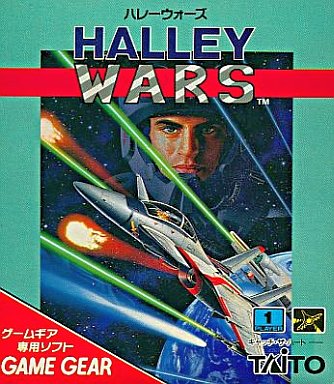
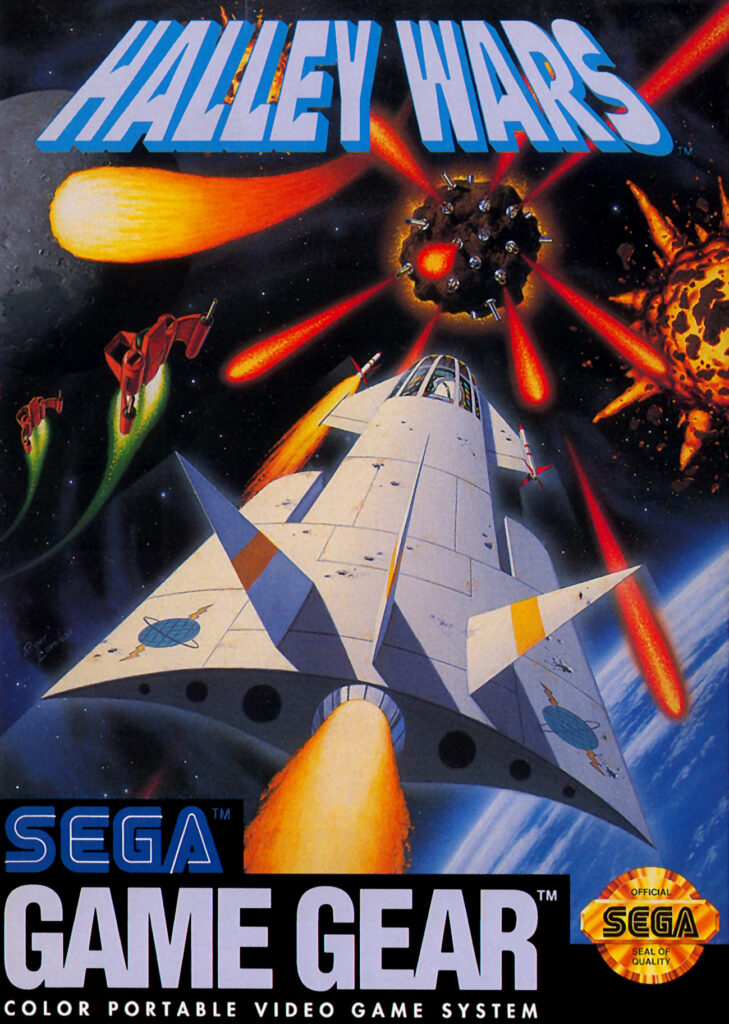
PUBLISHER: Taito (JP), Sega (US, EU)
DEVELOPER: ITL
RELEASE DATE: 06/21/91 (JP), 10/1991 (US), 12/1991 (EU)
If you’re reading a blog about 30+ year-old Sega games in our current day, you’re probably… mature enough to have heard of the infamous “Halley’s Comet.” According to Space.com, “As a “periodic” comet, [Halley] returns to Earth’s vicinity about every 75 years, making it possible for a person to see it twice in their lifetime. It was last here in 1986, and it is projected to return in 2061″ (Elizabeth Howell, 2022). Halley’s Comet is “the first periodic comet to be recognized,” the first comet “correctly predicted to return,” and the first comet “to be imaged up close by interplanetary spacecraft.” From an astronomical standpoint, Halley’s Comet was and is a game changer.
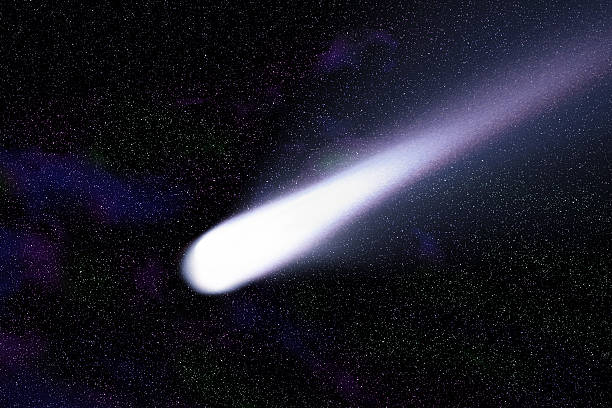
Halley’s Comet fever infected those outside the scientific community, as well. In 1986, Taito released a Halley’s Comet shoot-em-up for the arcade. In the game, you shoot random incoming foes and save each planet in our solar system from an oncoming comet. That’s right: Pluto, Jupiter, Saturn, and the rest all have comets that are close to destroying them. What are the odds! Are the comets Halley’s or Halley’s-affiliated? Taito doesn’t say (call them ‘tait’-lipped), but they do seem to be making a not-so-subtle point here: comets are a menace to our known universe and should be treated as such.
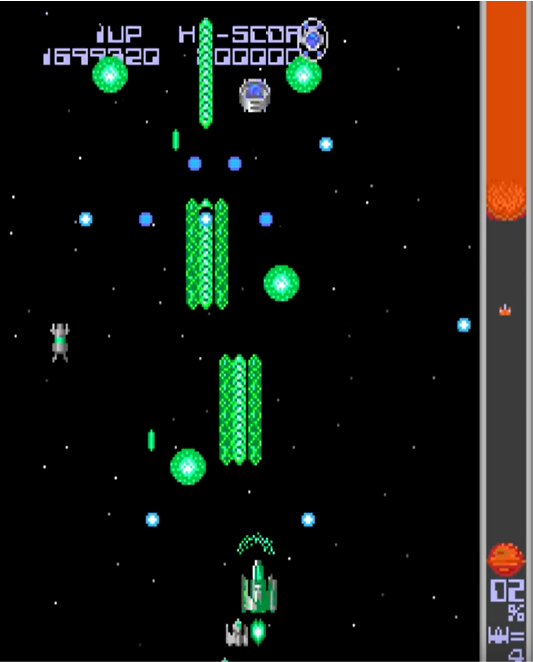
Unlike the comet it was named after, Halley’s Comet flew through Japanese and American arcades with little fanfare. While there’s evidence to suggest that the game was popular upon its release, a lack of contemporary console/computer ports likely means that any popularity was short-lived (yes, this is speculation, but most arcade games got a handful of home ports back in the 80s, even the unpopular ones).
No Halley’s Comet on Famicom/NES, Commodore 64, or any other platform for that matter. Taito was silent. Three years after Halley’s Comet and associates attempted to assassinate Earth and its cohorts, however, signs of life appeared. Troubling life. Halley Wars – a bonafide sequel to Halley’s Comet – was released for the Famicom Disk System in 1989, and later, in 1991, for the Game Gear. This time, the comet is the least of our trouble. This time, Halley… isn’t a comet at all.
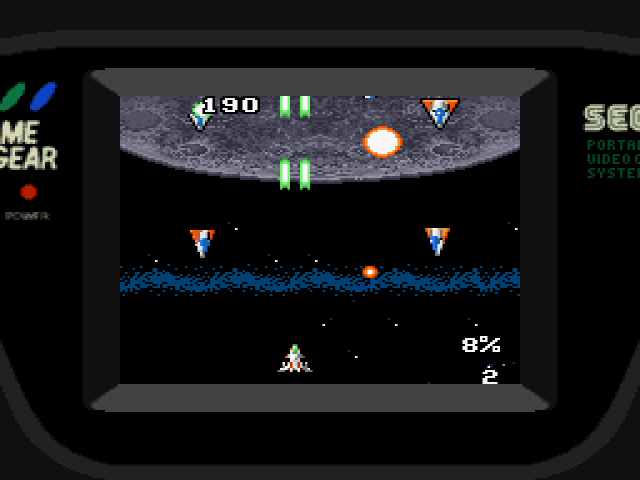
Lord Halley – an unknown being of extreme malice – hates Earth. So much so that he’s led several massive war campaigns against the planet, with loss of life numbered in the billions. Earth is not pleased with Halley, so it’s decided to spend billions of dollars on you, the ultimate space warrior. With your heightened abilities and a fantastic, expensive ship, yada yada yada, Lord Halley is toast.
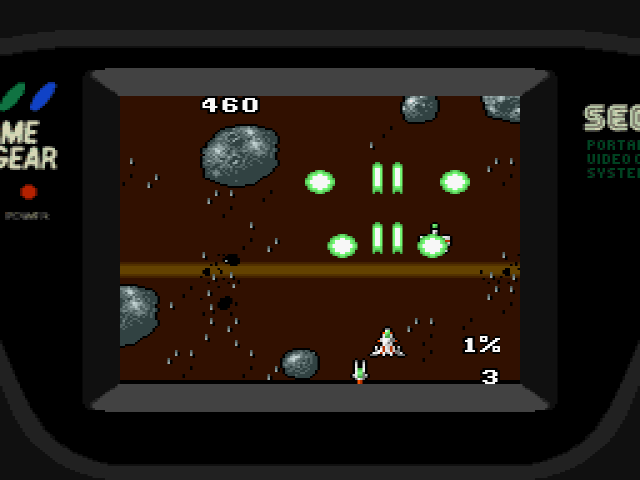
Halley Wars is a space-themed shoot-em-up and, as such, it functions exactly like you’d expect. The fate of humanity is at stake. You’re a pilot who’s the best at what you do. Your space ship has a small three-pronged blast that can be upgraded up to six times for increased range and damage. Missiles with crappy range are also available, as is a shield, thrusters for additional speed, and screen-clearing bombs. Enemies of underwhelming design (triangles, circles, among other shapes) race towards your ship, pleading with you to kill them. The bosses range from bizarre to utilitarian. Sometimes you fight a bug-eyed alien rock, sometimes you fight a confused janitorial vessel.
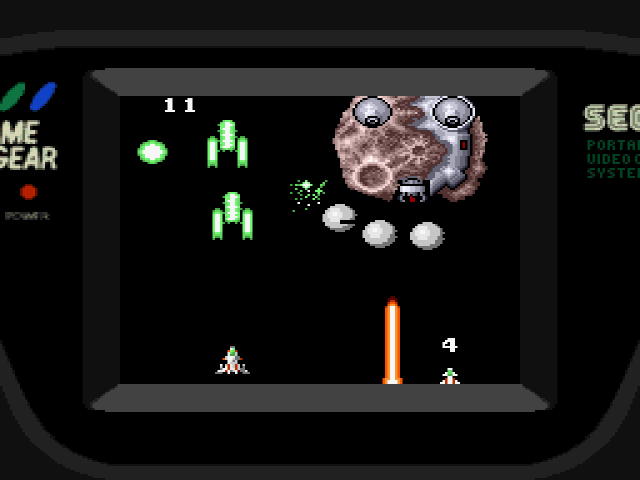
Sounds like just another regular workaday shoot-em-up, eh? Indeed, if not for one unique game mechanic: every time you miss an enemy that passes you, the Earth takes a little more damage. Thus it behooves you, as much as possible, to shoot every on-screen enemy before they soar past you and raise your damage counter. Should the earth reach 100% damage on the counter, the game will end, regardless of how many lives you have. Certain enemies do occasionally veer off to the side or soar upward past you, and these enemies don’t increase the counter if you don’t shoot them, but they are the minority. Blast all the fools or behold Earth’s end.
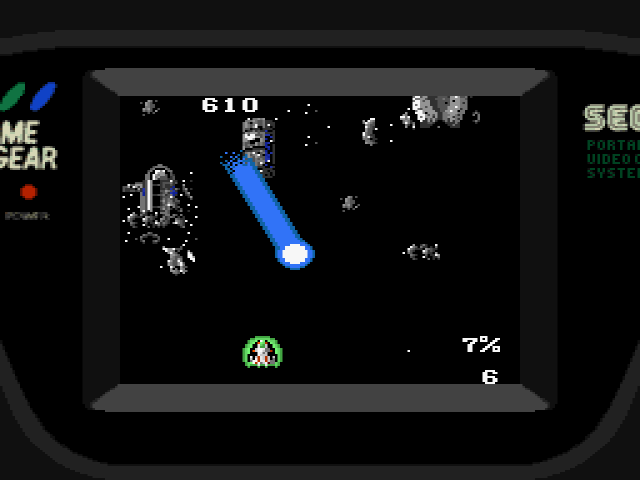
In the majority of shoot-em-ups, survival is the only objective. Shooting enemies for high scores is great and all, but most of us gaming mortals, as we ascend into the higher, tougher stages of any given shmup, are just looking to clear the stage. As such, we shoot while avoiding anything and everything. If we nail the bastards, great. If they fly past us, excellent. Our lives are what matters, nothing else.
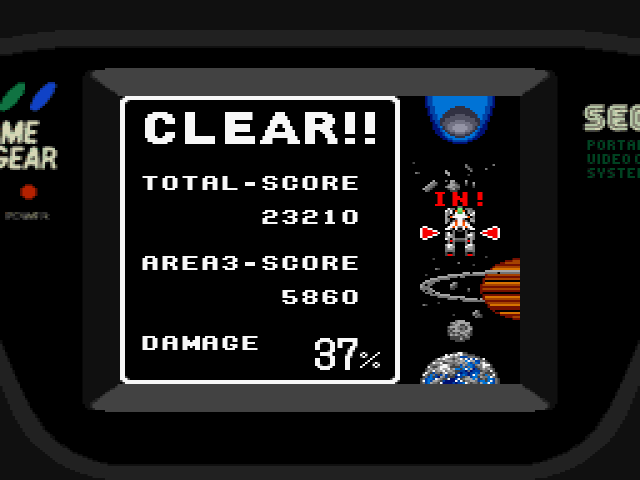
Halley Wars flips the script. Instead of focusing on staying alive and reaching Lord Halley, you have to shoot the bulk of his jerkface army while staying alive. This adds an entirely different perspective to the shoot-em-up genre, one that forces you to pay attention to the whole screen at all times. The result is sometimes overwhelming, but mostly feels like I’m working for a post-game achievement. The action is usually slow enough that I could handle most enemies, although certain buggers would sneak past here and there. I wouldn’t necessarily want to see this mechanic implemented in other shmups (unless a different developer refined it to perfection), but it works well enough in an otherwise by-the-numbers shoot-em-up like Halley Wars.
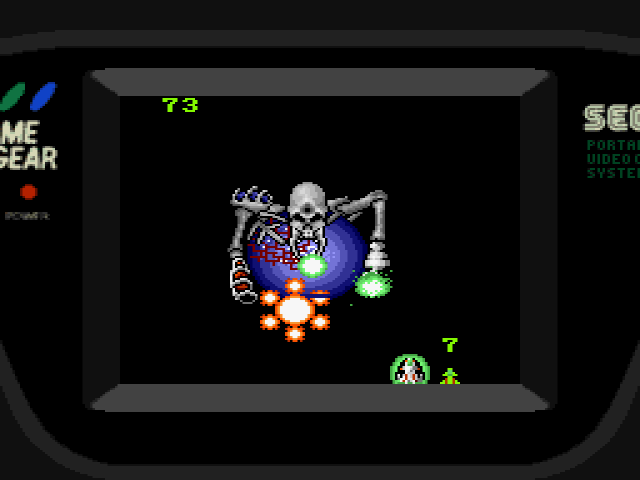
That said, even with this additional challenge, Halley Wars is just ok. The game feels nice to play, contains crisp, colorful visuals, and has a decent sense of progression, but it doesn’t leave any particular impression. Perhaps this is why, after Halley Wars released on the Famicom Disk System and the Game Gear, Taito left the “Halley” brand well enough alone. Arcade ports of Halley’s Comet remain on the Switch and PS4 for now if anyone’s interested. As for me, I think I’ll wait for the real deal to pass by Earth again in 2061. I’ll be 76 when Halley returns, yet even with a life fully lived, I doubt I’ll have seen anything like it before.
C
*screenshot courtesy of Replay Burners

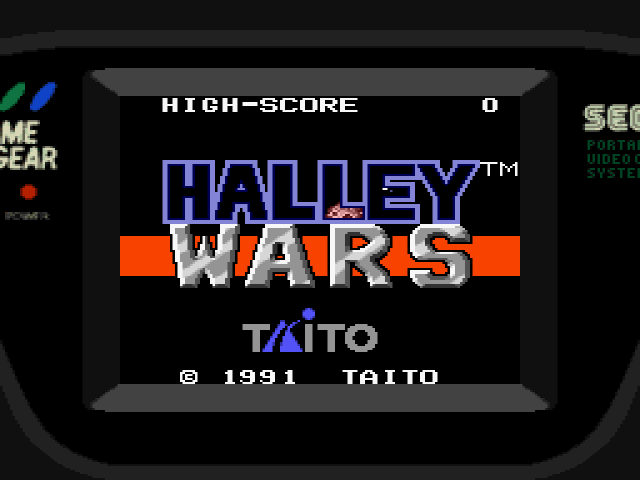
2 replies on “Halley Wars (Game Gear, 1991)”
“Tait-lipped”
Bless you for noticing.